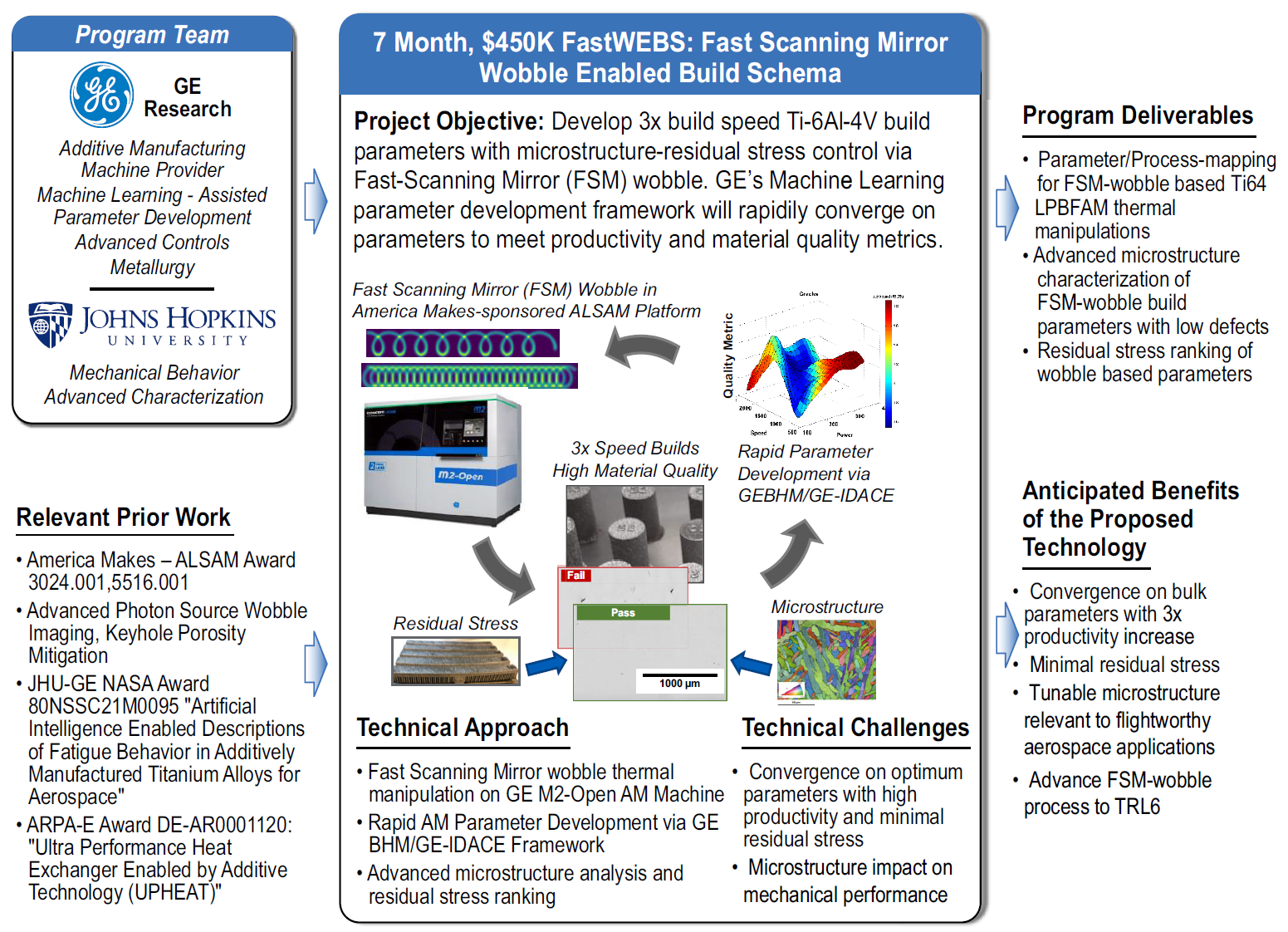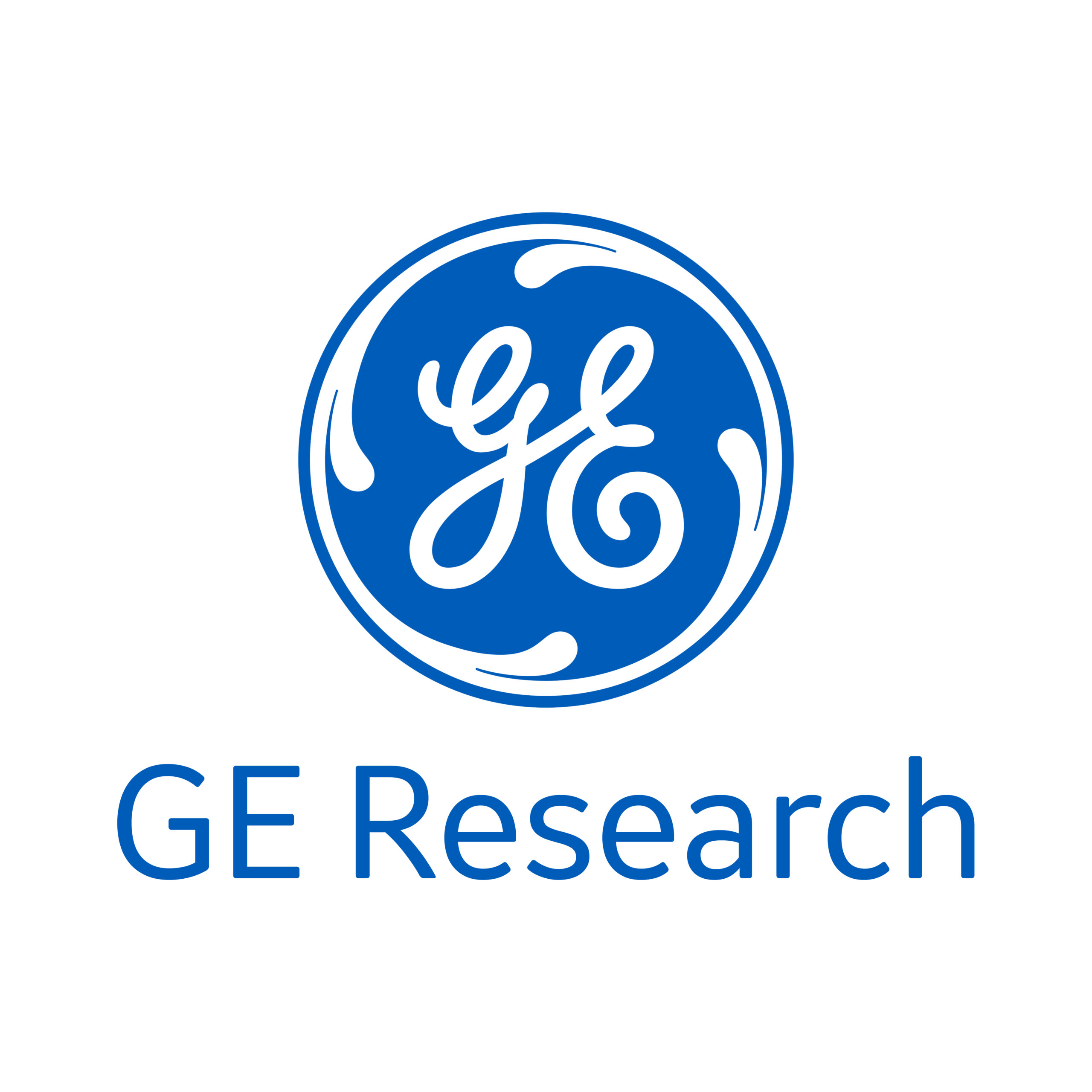


Fast-WEBS project review
Problem
Increased build speed results in higher part production throughput, one of the main barriers to entry for the additive manufacturing (AM) industry. While speed is important, maintaining high material quality is critical to meeting the performance requirements for the part and is challenging when printing at higher speeds. Among alloys explored for laser powder bed fusion additive manufacturing (LPBFAM) processability, Ti64 is typically not considered “difficult to process.” However, residual stress build-up is a known factor contributing to part distortion and cracking across many alloy systems.
As the upper limit on power availability in lasers increases over time, the AM industry has plateaued in the utilization of that laser power. Delivery of high power to the AM powder bed is challenging while maintaining reasonable material quality (e.g. keyhole porosity). LPBFAM machines only use a fraction of the available phase space of other AM techniques due to the difficulties of delivering power into the powder bed. The Fast-Scanning Mirror (FSM) -based wobble is a solution to deliver this power to the powder bed with rapid build speeds. It allows fine resolution when needed and broad resolution for increased productivity that is selectable on the fly to deposit energy efficiently where needed.
Objective
The objective of this project is to demonstrate the ability to increase the bulk build rate of LPBFAM Ti64 by 3x, using high-frequency wobble-based thermal manipulation developed by GE Research (GE) under the recent ALSAM Program (projects 3024.001 and 5516.001).
Technical Approach
GE, together with Johns Hopkins University, will demonstrate 3x build speed productivity while maintaining high material quality in the Ti-6Al-4V (Ti64) alloy. High-frequency wobble-based thermal manipulation, via a fast-scanning mirror (FSM), will be used to manipulate the thermal energy distribution from a single beam to support high power and scan speeds.
Given the thermal manipulations of a wobble-based scan path, this project will demonstrate the potential for wobble to modify microstructure features known to affect mechanical performance (e.g. grain size, texture). Finally, the hypothesis to modify residual stress using wobble-based thermal manipulation will be tested. This is a key technical hurdle to enabling improved geometric and dimensional control, as well as LPBFAM of large, complex parts and difficult-to-process materials.
To reduce the cycle time for project execution, GE will leverage a previously demonstrated framework that utilizes probabilistic machine learning (ML) and intelligent sampling and optimization protocols to accelerate the parameter development process for LPBFAM. The framework consists of a Bayesian Hybrid Model (GEBHM) as the probabilistic ML technique, GE-IDACE as the intelligent sampling framework, with optimization along with high-throughput automated characterization. By combining GE’s expertise in AM and advanced controls with Johns Hopkins’ experience in microstructure/mechanical performance relationships, this program will demonstrate a disruptive improvement to achieve cost-effective, energy-efficient AM capabilities. This project will showcase LPBFAM build productivities that have never been realized while meeting key performance parameters required to demonstrate material quality and control.
Project Participants
Project Principal

Other Project Participants
- NCDMM/America Makes
- Johns Hopkins University
Public Participants
- U.S. Department of Defense
